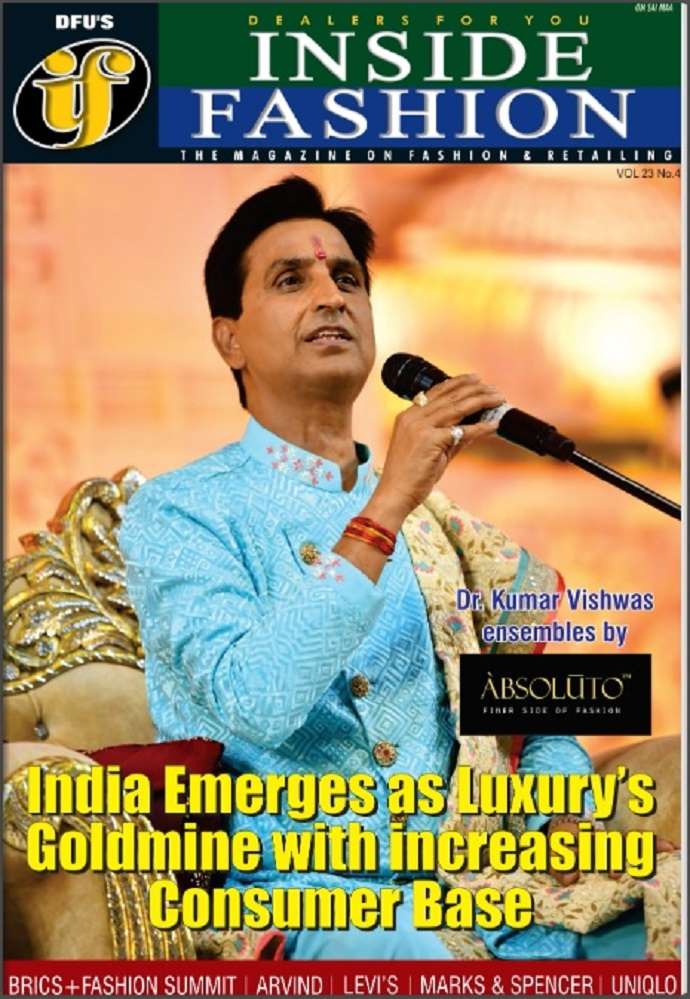The New Economics of Fashion: Why efficiency beats expansion in India’s retail race

13 November 2025, Mumbai
The narrative in Indian retail is undergoing a decisive transformation. The earlier obsession with scaling store counts and geographical sprawl is now being replaced by a sharper focus on operational efficiency and unit-level profitability. This shift is most visible in the fast-paced, trend-driven fashion and apparel sector, where unsold inventory can swiftly turn into dead capital.
While conglomerates like Reliance Retail continue to dominate overall revenue through sheer breadth, the most profitable and agile players like, DMart, Zudio, and V-Mart are proving that sustainable profitability in retail is not about who is biggest, but who is smartest.
In today’s apparel economy, productivity per square foot and inventory velocity are stronger determinants of value than total store count.
How efficiency became the core fabric of fashion retail
In fashion retail, inefficiency has a tangible cost. Every markdown, every delayed season cycle, and every warehouse full of unsold stock erodes profitability.
The most successful players in India’s retail ecosystem have mastered efficiency as a strategy by streamlining logistics, minimizing markdowns, and extracting maximum value from each retail square foot. The Indian apparel efficiency spectrum can be understood across four retail models.
Table: The Indian apparel efficiency spectrum
|
Retailer category |
Focus |
Core efficiency mechanism |
Key performance indicator (KPI) |
|
Fast Fashion (Zudio) |
Cost Leadership + Trend Agility |
100% Private Label, No Discounts, FOCO Model |
Revenue Per Square Foot (2× Industry Avg.) |
|
Value Retail (V-Mart) |
Tier II/III Saturation |
Cluster-based Logistics & Inventory Rotation |
Low Dead Stock Percentage (High Full-Price Sales) |
|
Global Fast Fashion (Zara) |
Vertical Integration & Speed |
Design-to-Shelf Speed (2-5 weeks) |
Low Markdown Rate (15% of items) |
|
Diversified Retail (Reliance Trends) |
Omnichannel & Multi-Brand |
Scale-backed Supply Chain Leverage |
Overall Revenue Scale & Market Coverage |
This spectrum shows that Indian value-fashion success is being driven by efficiency-first models that mirror the speed and precision of global fast fashion without the debt and discount dependency.
Zudio, redefining fast fashion through operational precision
The story of Zudio, Trent Ltd.’s breakout value fashion chain, is a masterclass in disciplined execution. It is India’s answer to Primark meets DMart, a model that rethinks fashion not as glamour, but as a finely tuned logistics business. Zudio spends almost nothing on advertising.
Instead, it reinvests savings into lower price points, turning affordability into a viral marketing engine powered by social media buzz. Everyday Low Pricing (EDLP) in focus. Unlike traditional retailers that rely on end-of-season sales, Zudio’s no-discount model ensures every sale happens at full margin, avoiding the erosion of brand and profitability.
The Franchise-Owned, Company-Operated (FOCO) model allows franchisees to bear store-level capex, while Trent retains control over merchandising and operations. This results in rapid, asset-light expansion with profit metrics that outpace the broader market.
The outcome is clear. Zudio’s sales per sq. ft. are roughly Rs 16,300 annually, almost double the industry average, and its inventory turnover rate refreshing nearly 60 per cent of products weekly keeps stores perpetually fresh and cash cycles short.
Read our latest issue
Reliance Trends the empire approach to fashion retail
At the other end of the spectrum lies Reliance Trends, a vertical under Reliance Retail’s mammoth 19,000-store portfolio. Its approach is rooted in scale, ecosystem leverage, and platform integration.
Reliance operates across store formats multi-brand outlets, large-format stores, and digital platforms like Ajio creating a dense omnichannel network that spans India’s urban and semi-urban markets.
Reliance Trends benefits from the parent company’s deep logistics, data analytics, and supply chain infrastructure. This allows product availability and pricing control unmatched by smaller players.
However, the trade-off of scale is evident. While Reliance Retail’s EBITDA margin stands at approximately 8.6 per cent, higher than DMart’s 7.6 per cent, its profit per store at around Rs 0.6 crore is a fraction of DMart’s Rs 6.5 crore. The profit engine here is not unit efficiency but the network effect of a massive retail ecosystem.
V-Mart, the Tier II & III efficiency engine
In smaller-town India, V-Mart Retail is writing its own efficiency playbook. By focusing squarely on Tier II and Tier III markets, V-Mart bypasses the inflated real estate costs of metros and uses a cluster-based logistics model to enhance supply efficiency. Each cluster comprising 10-15 stores within a 150 km radius shares warehousing and inventory systems, reducing distribution costs by over 25-30 per cent compared to national averages.
This approach keeps product availability high, dead stock low, and customer loyalty steady in value-conscious regions.
The hidden metrics behind fashion retail profits
When comparing Indian fashion retailers, efficiency can be quantified through a few critical indicators.
|
Retail efficiency |
High efficiency model (Zudio/DMart) |
Scale model (Reliance Retail/Trends) |
Significance in fashion |
|
Profit Per Store (Annual) |
Significantly Higher (e.g., DMart: Rs 6.5 cr) |
Lower (e.g., Reliance Retail: Rs 0.6 cr) |
Measures unit-level profitability and asset utilization. |
|
Sales Per Square Foot |
High (Zudio: Rs 16,300 annual) |
Variable, lower average across diverse portfolio. |
Measures real estate productivity; critical for leased spaces. |
|
Inventory Turnover Ratio |
Very High (Zudio: Refreshes 60% weekly) |
Variable; lower average across wide product mix. |
Measures speed of stock conversion; crucial for avoiding obsolete fashion. |
|
Markdown/Discount Rate |
Low/Zero (Zudio's core policy) |
Moderate to High (Used to clear seasonal stock). |
Directly impacts Gross Margin and Net Profitability. |
This data reveals that efficiency-driven retailers generate up to 10× higher profits per store than their scale-heavy counterparts.
When bigger isn’t better
Studies using Data Envelopment Analysis (DEA) on Indian retail models indicate that aggressive expansion without operational optimization leads to technical inefficiency.
Retailers that prioritize scale before process optimization often face rising costs per square foot, falling stock productivity, and eroding margins. In contrast, efficiency-focused players, Zudio, DMart, and V-Mart achieve higher productivity per input unit, meaning every rupee spent on logistics, real estate, and inventory generates proportionally higher output.
Efficiency as the new luxury
As India’s fashion retail matures, the competitive edge will increasingly lie in lean systems, rapid stock cycles, and data-backed merchandising, rather than splashy expansions. Retailers that treat every store as a profit center not a branding outpost will define the next phase of Indian retail evolution.
In short, the market is rewarding those who understand that in the age of fast fashion and faster capital cycles, efficiency isn’t the byproduct of success it is the product itself.
Latest Publications

























